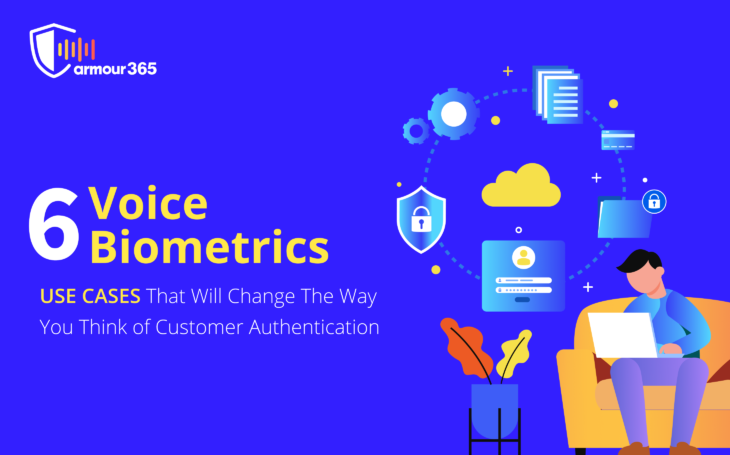
Data is wealth, the future of business; it is the core of everything in this digital era. Hence, you see multi-pronged approaches towards security and privacy encompassing law & regulation, technological interventions, and cultural evolution. Biometrics is one of the most important ways to restrict data access among authorized personnel and owners.
Biometric systems have been developed to integrate seamlessly with AI and encryption tech. They have been rapidly adopted by different institutions and companies to prevent cyberattacks. The most popular authentication systems use physical biometric traits like fingerprints and iris prints. However, there is a need for additional layers, especially after the spiking demand for contactless services due to the pandemic.
Voice biometric systems use over 100 different physical and behavioral voice characteristics to authenticate. As each person’s voiceprint is unique, the system is as reliable as the other types. There are many voice biometrics use cases to illustrate how it can revolutionize business performance.
Contact Center Performance
In many industries, contact center agents have to authenticate caller identity before engaging with the customer. Sometimes the process recurs when calls are transferred for escalation, testing the customer’s patience and reducing satisfaction with service quality. Implementing voice biometrics systems in contact centers can reduce the call duration, eliminate friction, and cut down on costs. No more answering repetitive security questions.
Banking and Financial Services
The banking, insurance, and financial services sector is vigorously investing in AI to provide a better customer experience. Famous banks and financial organizations like J.P. Morgan, Bank of America, Morgan Stanley, and S&P Global have already invested in conversational AI to answer complex financial questions in plain English.
At the same time, it is also one of the most vulnerable sectors, with cyberattacks growing in volume every year. A cyberattack can cost a financial company $18.3 million annually. The frequency has gone up after the COVID-19 pandemic.
Voice biometrics can work with existing security measures to speed up authentication. It enhances consumer confidence which is crucial for trust. Users are saved from the trouble of remembering multiple passwords and switching between devices and OTPs.
It is also easier to provide proof-of-life remotely via voice AI authentication, to have money dispensed, and other social security benefits. The customer experience will improve manifolds in the insurance sector, crucial for reducing consumer frustration.
Education & Workforce Management
While some things in the education sector will go back to normal post-pandemic, online education is now a viable model for groups like working professionals and students living in far-flung places. Voice biometrics in education can be used to track student attendance, help visually challenged students in exams, and authenticate entry to private conferences.
Likewise, tracking attendance, timesheets, and apportioning benefits to legitimate recipients can also be simplified using voice biometrics.
E-commerce & Retail
McDonald’s raised eyebrows when they acquired a voice-based platform for multilingual conversation and ordering. Businesses in the retail, logistics, and F&B sectors can implement voice biometrics to eliminate false orders that result in a high volume of losses. Consumers will also have more confidence in making high-value jewelry and gadget orders due to the stronger security features of voice-based authentication compared to OTPs.
Healthcare & Medical
With the rise of telemedicine and technology-enabled healthcare that allows patients to be empowered in the decision-making, voice biometrics can play an important role in authenticating access to Electronic Health Records (EHR). Similarly, access to medical devices can also be made quicker with voice biometric authentication. Using fewer devices and eliminating passwords and OTPs enhances the user experience.
Home Security & IoT
Smart security and IoT applications have become very popular due to the reduced reliance on monitored security systems. They work together seamlessly to provide comfort and keep your home safe. Using voice biometrics can further heighten security while reducing false alarms. It is also a good alternative to the hassle of recalling the passcode to bypass an accidentally triggered alarm. You can also authorize access for family and friends without risking the passcode falling into the wrong hands.
Conclusion
We believe that these Voice Biometrics use cases would have given a better understanding of how it can change customer authentication in different industries.
You know the time is ripe for voice biometrics when Amazon develops its in-house solution. You can also get the jump on early adoption with armour365™, a language-independent voice biometric solution. It is equipped with anti-spoofing layers to distinguish real human voices from recordings. It can drastically reduce operational costs and increase efficiency, freeing up your resources for deployment in more revenue-crucial areas.




